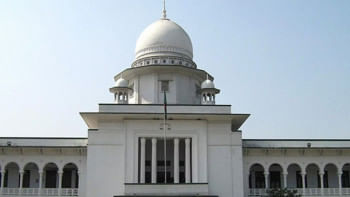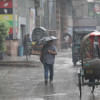Planting trees during heatwaves is not a good idea. Here's why

Recently, as the mercury continued to hit 40 degrees Celsius and above, and a heatwave scorched the country, discussions on tree-planting as a potential solution became popular. Indeed, trees can cool the environment by providing shade and acting as water sprinklers. A tree canopy can block the input of shortwave solar radiation to the ground by about 60-90 percent, and canopy shading can reduce the local temperature by about 3.06 degrees Celsius. Trees also draw groundwater through their roots, use some for their internal functions, and release the excess water through microscopic leaf pores; the process is called transpiration. The water released through transpiration can reduce the local temperature by about one to eight degrees Celsius. In fact, one can feel a tree's shading and transpiration-mediated cooling effects within 10 metres of the tree's canopy.
That being said, canopies of some trees are large, others are small, some are thin, and others are thick. So, the ability of a tree to block the incoming solar radiation varies between tree species. Besides, solar radiation that passes through a tree canopy reflects on the ground and impacts the cooling effect. A grassy surface can absorb more solar radiation than a brick or an asphalt surface. Accordingly, the cooling effect of the same tree can be higher on grassy grounds than on brick or asphalt surfaces. The transpiration rates of trees also vary among species. So, trees' ability to combat heatwaves depends on species and location, and every tree counts.
A recent discussion on social media about organising a movement to plant one crore trees across the country is praiseworthy. It is a novel effort towards building a climate-resilient and green Bangladesh. If planting so many trees sets a record and introduces us as an environment-friendly nation on the world stage, we should be proud. However, unless we plant large trees with intact canopy and roots, we should not expect such a tree-planting effort to have any immediate cooling effect to counteract the present or forthcoming heatwaves in the next few years. We must understand that combating heatwaves through tree-planting is a long-term process, not an overnight solution.
In fact, when discussing tree-planting, we typically consider planting seedlings with only a few leaves. These seedlings can do little to cool the environment. Instead, seedlings need shade and moisture to thrive. While some seedlings can withstand some degree of dryness for some time, planting those in the middle of a heatwave or during the dry season would likely result in the death of those seedlings. In fact, saplings or trees could also die during a heatwave because the higher the air temperature, the more a tree transpires and reaches a point where it cannot draw underground water fast enough to support its internal functions.
Yet, surprisingly, the discussion on planting trees continued during the heatwave last month. The decision to plant trees in the middle of a heatwave can only be justified either by a gross misconception that planting trees would immediately cool our environment or by sheer ignorance about the technicalities of tree-planting.
We must not forget that Bangladesh's Forest Department is the ultimate authority with vast experience and technical expertise in tree-planting. They launch their yearly tree-planting campaign during the rainy season with remarkable success, and they do so based on their research and experience. So, while I applaud the idea of planting one crore trees, I suggest abandoning the idea of executing it in the middle of the dry season. The rainy season is the ideal time for the task.
In fact, it would be wise to combine such an initiative with the Forest Department's yearly tree-planting campaign to make the whole effort a grand success. This way, we can set an example of collaborating with different segments of society towards achieving the common goal of a climate-resilient and green Bangladesh.
The climate of Earth is warming. Frequent and intense heatwaves are becoming the new normal. While artificial infrastructures can provide temporary comfort, they are not the solution in the long run. While the monetary value of most infrastructures depreciates over time, trees' value increases over time. So, we should plant trees. But we must plant the right tree at the right time and place. We must understand that while we may proudly set a world record by planting a crore of trees, planting them during the dry season and in the middle of a heatwave might lead to another world record of seedling death.
Shekhar R Biswas is professor of ecology at East China Normal University in Shanghai.
Views expressed in this article are the author's own.
Follow The Daily Star Opinion on Facebook for the latest opinions, commentaries and analyses by experts and professionals. To contribute your article or letter to The Daily Star Opinion, see our guidelines for submission.

 For all latest news, follow The Daily Star's Google News channel.
For all latest news, follow The Daily Star's Google News channel. 










Comments